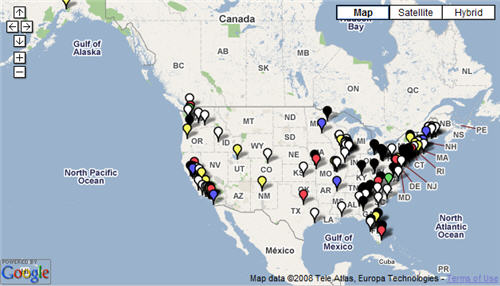Mapping newspaper layoffs – where will the journalists go?
Erica Smith of Graphic Designer has done some great map mashups of US newspaper layoffs so far in 2008 (4,490+) and in the last seven months of 2007 (2,185+), as below.
While you can pick out trends from the maps such as a big rise in layoffs in the North-East, this is more about underlining the trends in newspaper jobs.
One of the key topics at the Future of Media Summit 2008 on July 14/15 will be the future of journalism. I absolutely believe that journalistic skills and training are immensely relevant in the economy today. However many current newspaper journalists will have to adapt their skills to new jobs and roles, often outside traditional media. We will explore, among other issues, how this transition might happen.
US newspaper layoffs: 2008 to date

